4 principles for shipping good design when everything’s on fire
Or how to make friends and influence (product) people
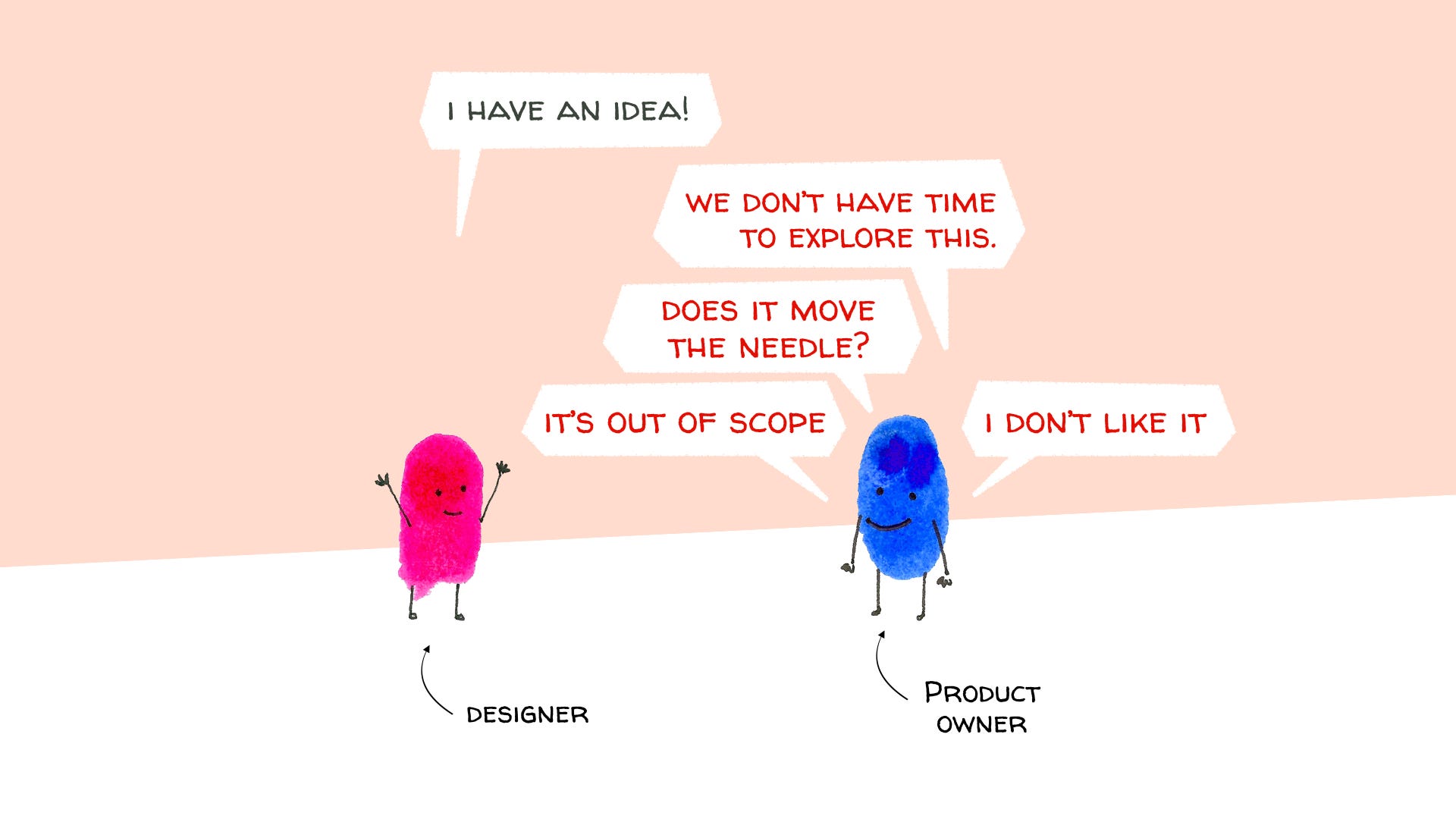 You may recognise some of these responses.
You may recognise some of these responses.
**Are you having a hard time getting your designs built? **Does it feel like everything’s a priority? Are your product owners too obsessed with numbers, and don’t value the quality of the experience?
At Deliveroo we’re incredibly lucky to have not only a great design team, but also a fantastic set of product people who value what we do. However that doesn’t mean shipping ‘good design’ is always easy.
Whether you’re in a big company or a small one, early stage or decades old, at some point you’re going to experience the frustration of feeling like you can’t ship good work.
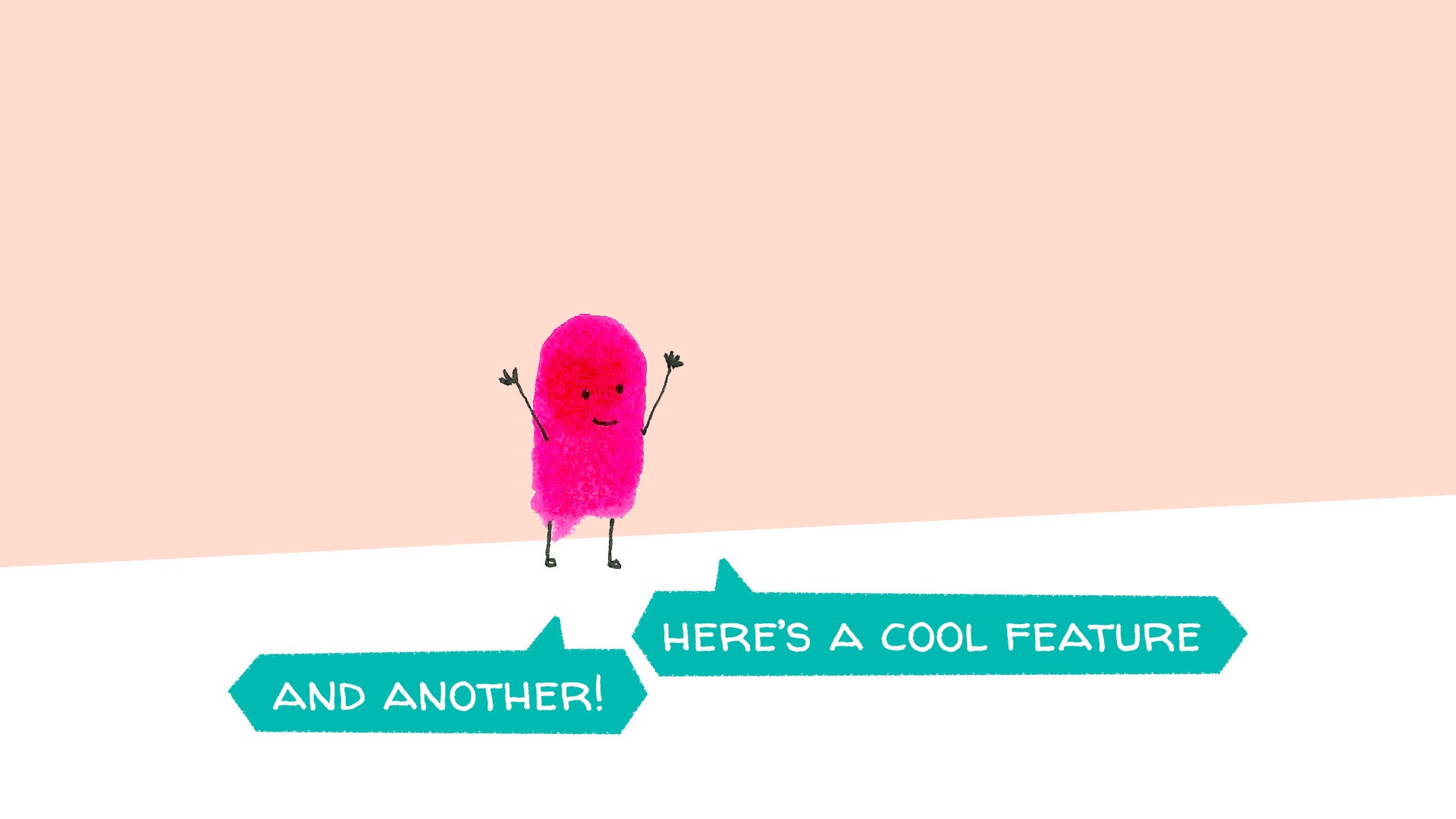 …and none of them see the light of day.
…and none of them see the light of day.
You may already be feeling it. Blocked at every turn, forced to whittle down your projects into an also-ran ‘MVP’. The prototypes may be piling up, in tickets or folders, never to see the light of day.
As product designers, our job is to create a good user experience. But no-one else respects that right?
(hint: Wrong.)
It turns out it takes more than a good designer to ship good design. You need the support of your decision maker (whether that’s within a sprint team or your CEO) as well as a shared understanding with engineers and other colleagues in your company.
It also turns out good design is about more than a great prototype.
What are the requirements of good design?
Julie Zhuo, VP design at Facebook Design, published a great sketch listing the ‘Ambition heirarchy of Designers’, which speaks well to what we designers value.
Defining good design is tricky, but there are some qualities that are broadly considered important.
-
Good design is a pretty thing Sure, that’s probably what my mother would say. After all, if it looks good, ship it, right? Who cares whether it does anything useful.
-
Good design is powerful features OK, clearly it’s important for your thing to do stuff. Perhaps the more stuff your thing can do, the better it is? Let’s add some stuff, and more stuff.
-
Good design is a logical and usable experience Yeah, this one is important. After all, if people can’t work out how to do the stuff, the stuff is pretty much useless. Let’s make it logical and usable.
But there’s one more, critical requirement.
Good design needs to solve a problem.
Sounds obvious, and Julie alongside many other people more qualified than myself have written about it, but fundamentally we’re problem solvers. Only by proving that we can solve actual business or user problems can we gain the influence we so desire.
Stanley Wood, Design Director at Spotify and writer of Design doesn’t scale told me that one thing he drills into the Spotify design team is the importance of selling the problem.
‘Sell the problem, find a solution’ — Stanley Wood
This strikes to the heart of influencing people at your organisation. Get everyone agreed that the problem you want to solve exists and they’ll buy in to the solution you come up with much more easily.
Ok, now that’s sorted, we need to sell the problem. But it’s still really hard to get through to people!
To sell the problem you need to work out what the problem is, right? It takes research, data, space to think. For those precious resources, you need to persuade people that they’re worth spending time on.
You need to be able to have good conversations about your work and what’s important. So lets run through a couple of the *bad *conversations you may be familiar with when persuading people that a problem exists…
(For brevity I’ve decided to call our designer protagonist ‘Sam’ and our Product Owner ‘Lucy’)
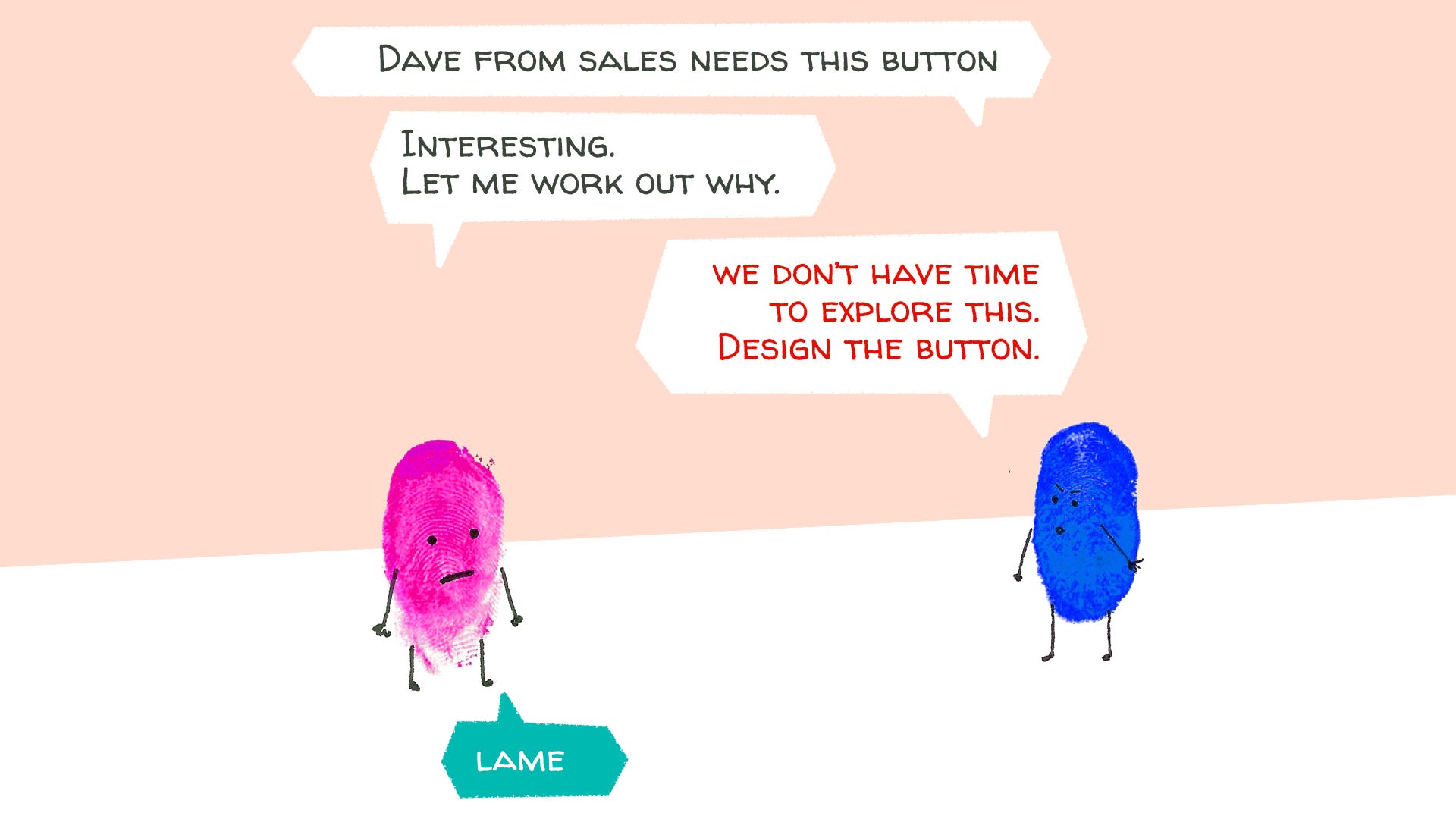 Prescriptive request, no time/desire for exploration into the problem
Prescriptive request, no time/desire for exploration into the problem
**‘No time for exploration, design the button’ ** Lucy has no respect for the value of design, and is short-sightedly papering over the cracks.
Or: There’s massive internal stakeholder pressure or the need to unblock another business unit. This is a tactical solution and Sam shouldn’t be so dogmatic.
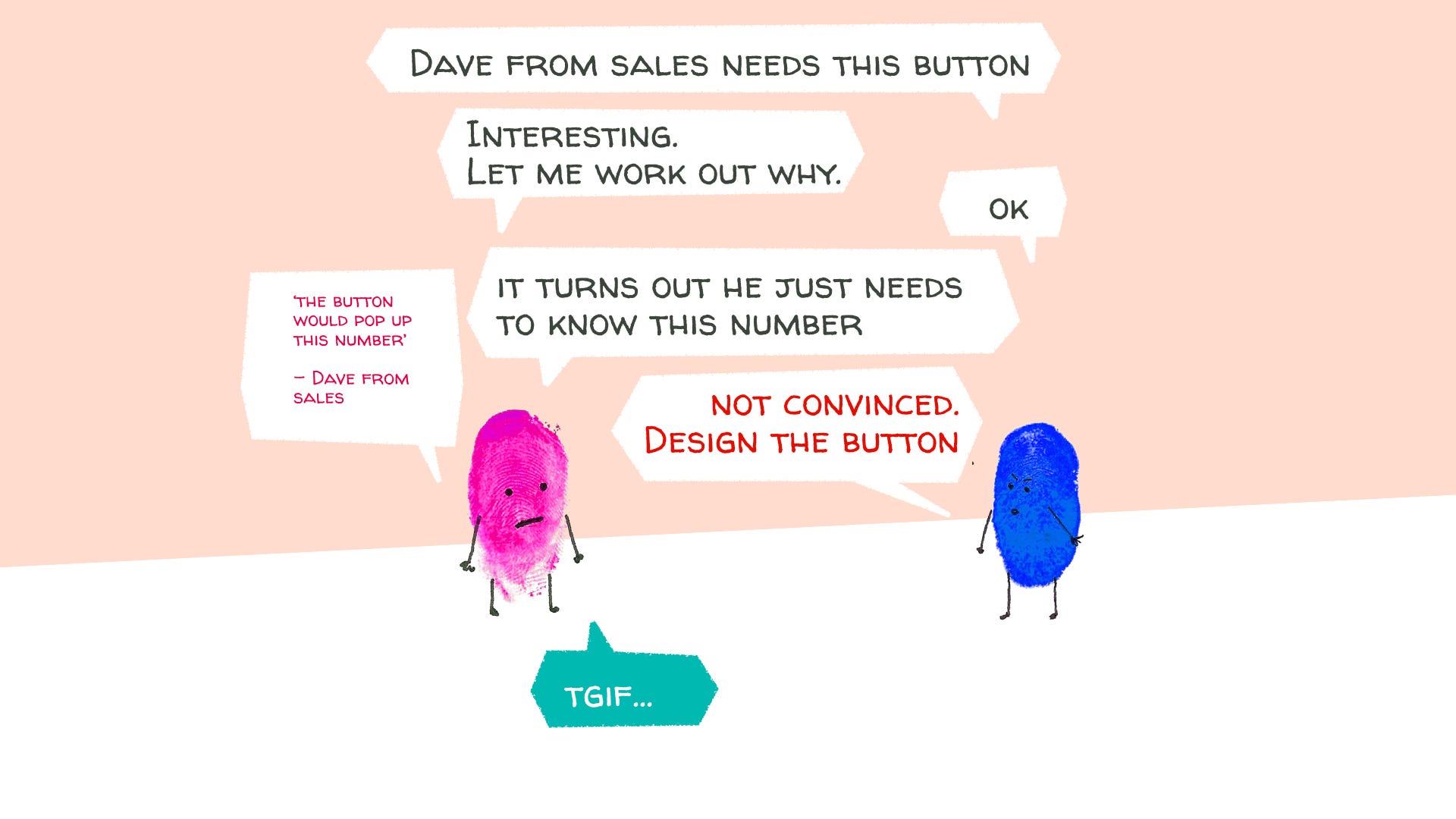 The problem definition isn’t convincing enough, or the product owner ‘knows better’
The problem definition isn’t convincing enough, or the product owner ‘knows better’
‘Not convinced that’s the problem, design the button’ Lucy, who has so far had to rely on her own judgement, or define the problem herself, may not trust someone else to help.
Or: Sam may not have put together a convincing enough argument.
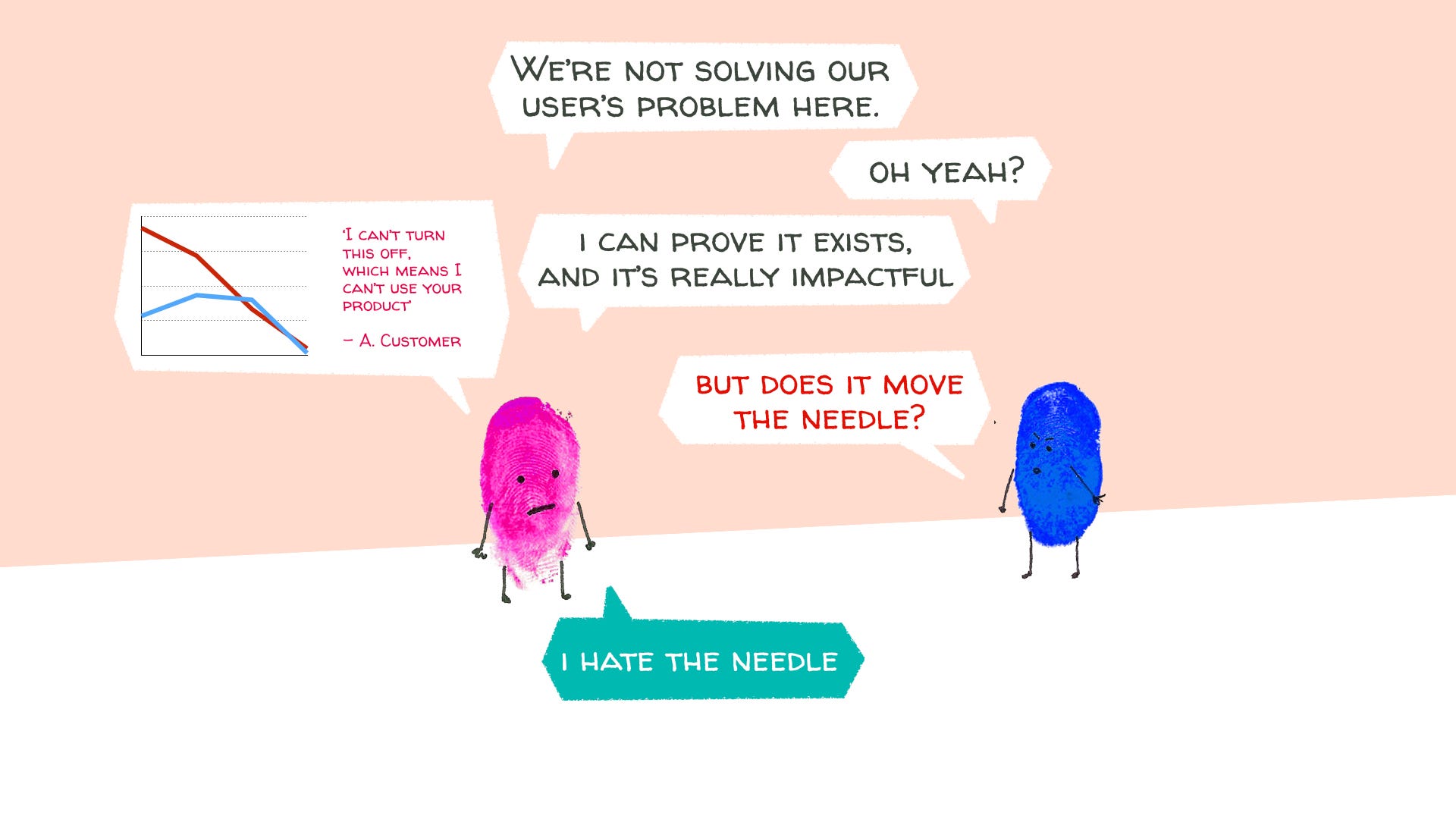 Solving the problem isn’t ‘useful’ for the business or team goals
Solving the problem isn’t ‘useful’ for the business or team goals
**‘It doesn’t help our goals’ **Lucy only cares about the numbers — good UX can’t be measured quantitatively!
Or: Sam may be off finding ways to improve the user experience without taking into account the business needs. Lucy is reporting on solving different problems, Sam needs to help her out.
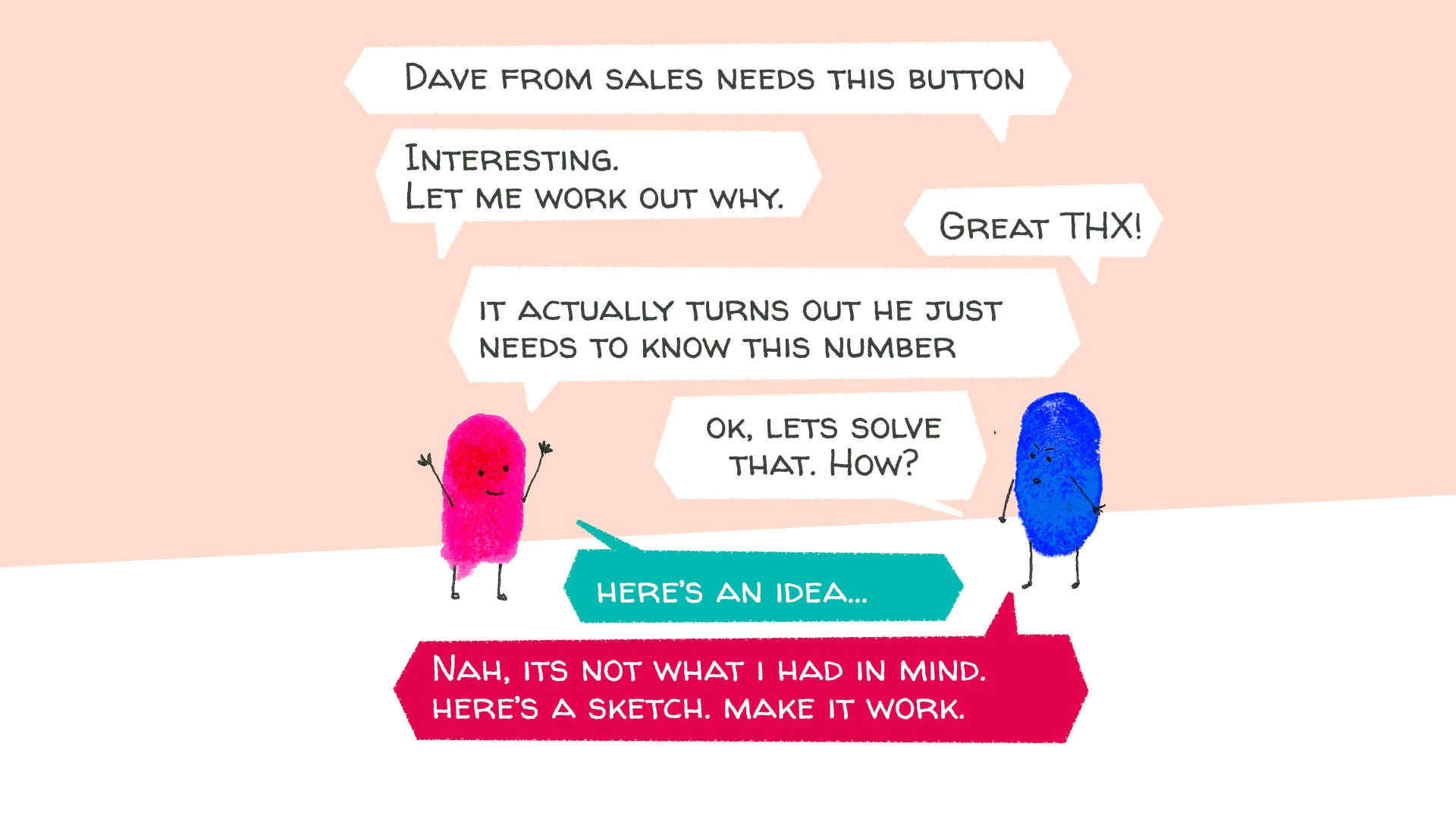 Despite believing in the problem, the product owner has a prescriptive solution in mind
Despite believing in the problem, the product owner has a prescriptive solution in mind
**Prescriptive solution, despite not solving the problem **Lucy thinks she’s the designer, and designers just provide the polish.
Or: Sam didn’t involve Lucy enough in the design process.
Let’s be better. Let’s lead from within.
These are tough conversations that we all go through from time to time.
But the reason they’re tough is not because everyone’s an asshole. They’re tough because your incentives and values aren’t aligned with the people you’re trying to convince. They’re your fault as much as anyone else’s.
It’s too easy in these situations to think ‘this person isn’t a designer, they don’t get my vision, this is design by committee’.
These are also the very same moments in which you can become an ally, influence and most effectively change minds. After all, assuming you’re working with people who want the best for your company, you’re all after the same thing.
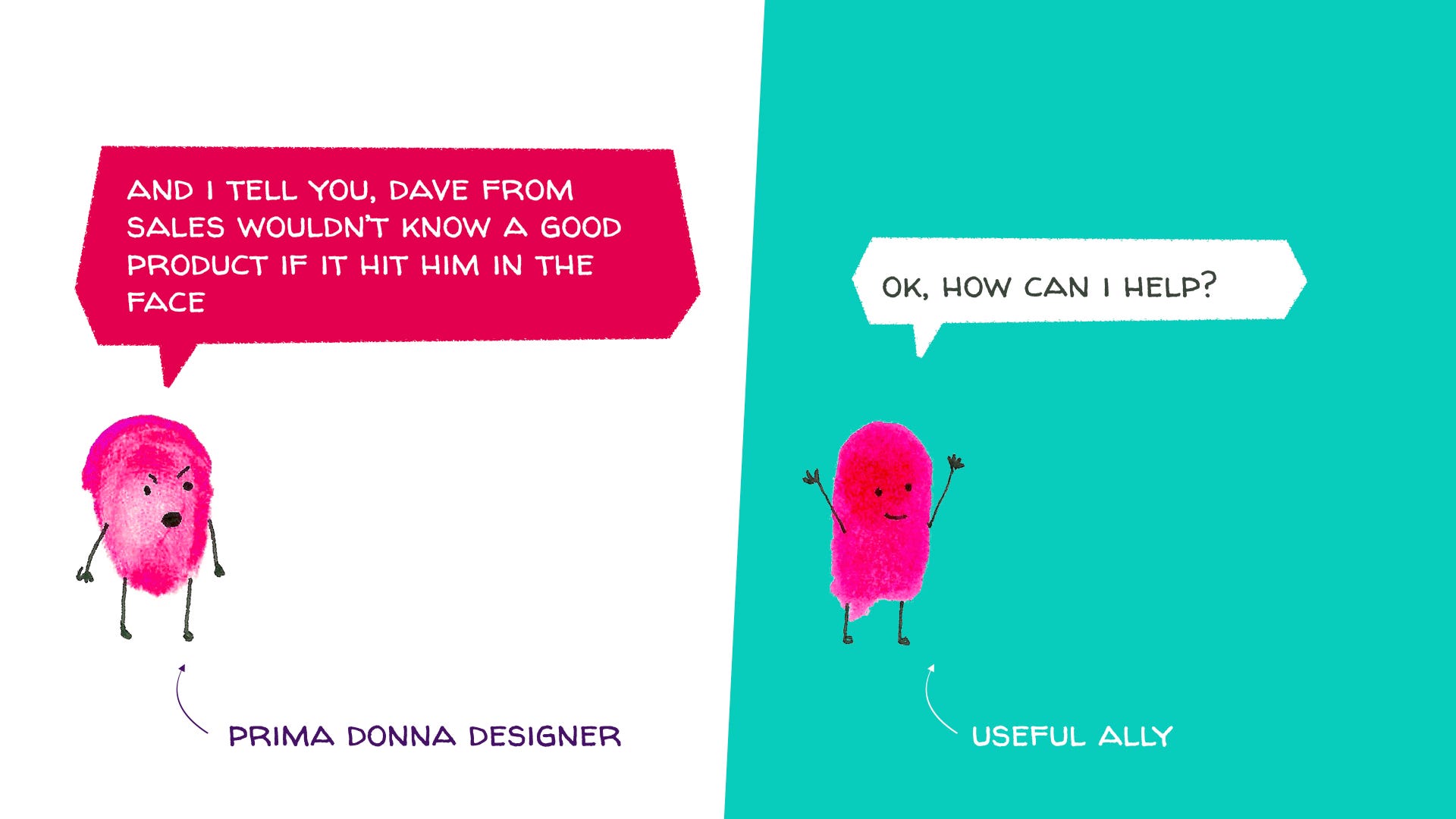 Who would you rather work with?
Who would you rather work with?
This presents a golden opportunity, not just to be able to ship better work, but also be more trusted and influence a wider sphere of people. Some call this ‘leading from within’.
Get people on your side and suddenly you’ll find yourself consulted on decisions, invited to meetings. People will ask to work with you.
Leading from within comes down to communication and empathy. Be excellent at communicating and empathetic to the people you’re talking to, and you’ll be able to affect change– maybe not the first time but gradually more and more. (Yeah, it requires patience too).
Ok, so what are these 4 principles?
I’ve seen all of these things work — but they’re easier said than done (and I’m no master). They won’t all be appropriate for all situations, and they equally aren’t a silver bullet. But they should help.
Principle One: Make People Look Good
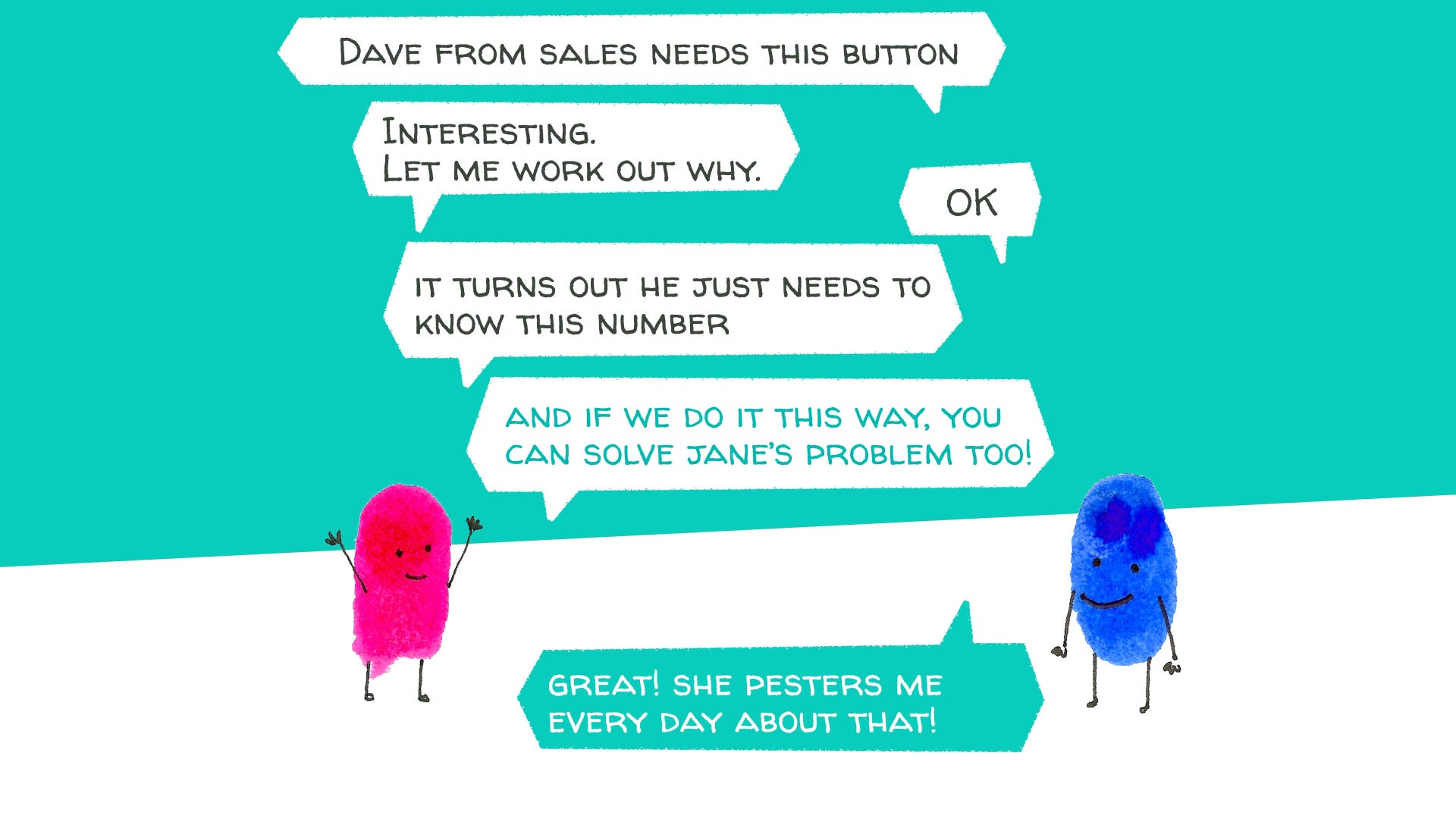 Help me help you… Help me, help you… (This isn’t the only Jerry Maguire quote)
Help me help you… Help me, help you… (This isn’t the only Jerry Maguire quote)
Dave from sales, PM Lucy, and in fact everyone else in the organisation, is judged on different criteria to you. Work out what they need to be successful at their job and use that understanding to focus your effort and arguments on things they’ll care about.
There may also be other factors — like how your company grew, which may explain biases. For example if you’re the first designer, someone was doing and maybe enjoying your job before you. Be sensitive to that.
Principle Two: Tell a good story
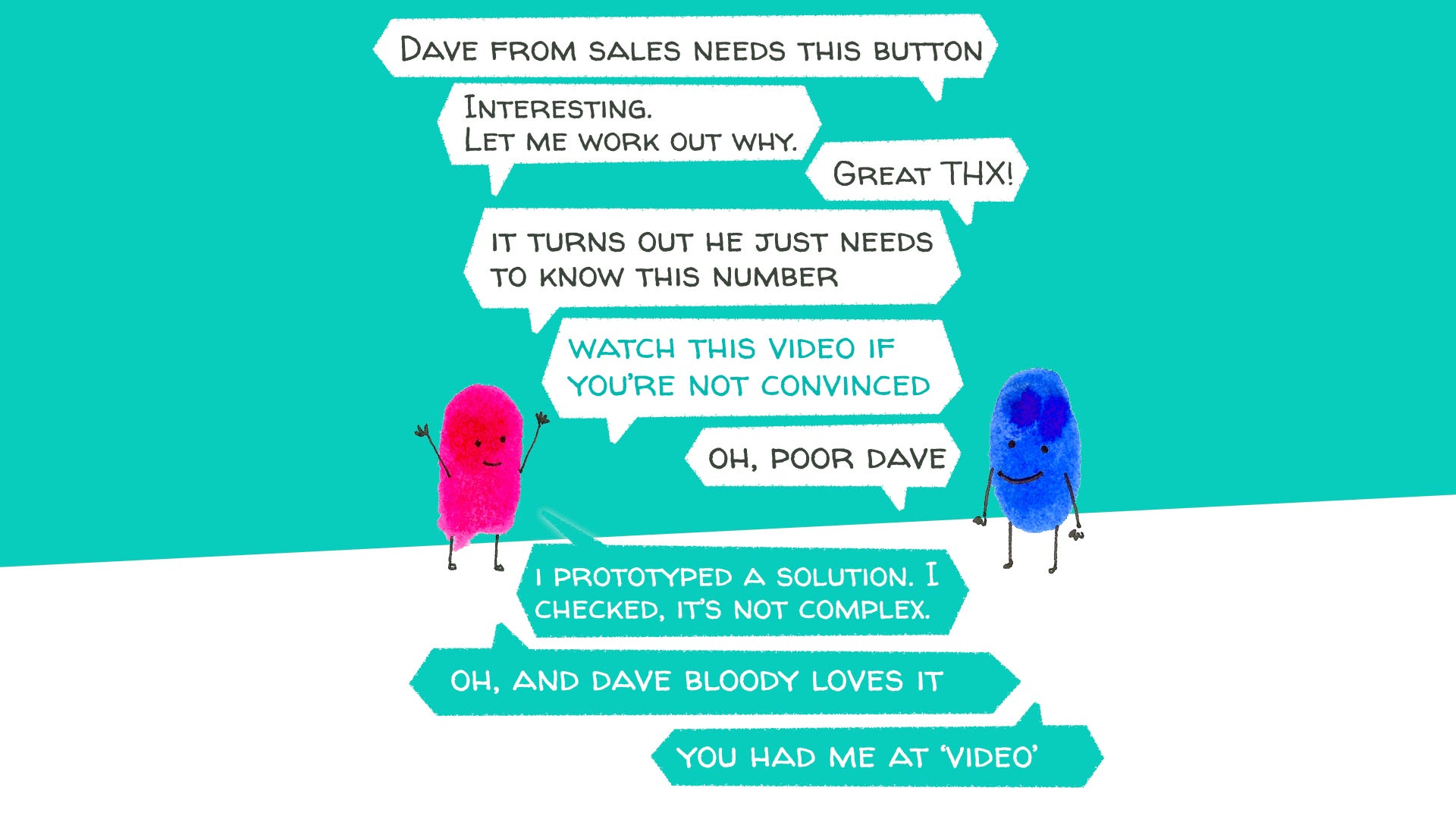 Use all your skills to convince — even if that means diving into pixels.
Use all your skills to convince — even if that means diving into pixels.
Often the complexities of the problem are difficult, you need to distill them into a compelling and brief presentation. Think deeply about the most appropriate medium for this — and again what people respond to best. I’ve worked with people who just don’t get it until they see a tappable prototype, and others who need a slideshow.
Be cognisant of how you present your data and, honestly, think about narrative structure.
-
What’s the beginning, middle and end of your story?
-
What tricky questions will come up, and how do you build them into the presentation?
-
What one thing will blow Lucy’s hair back?
Principle Three: Be Pragmatic, not Dogmatic
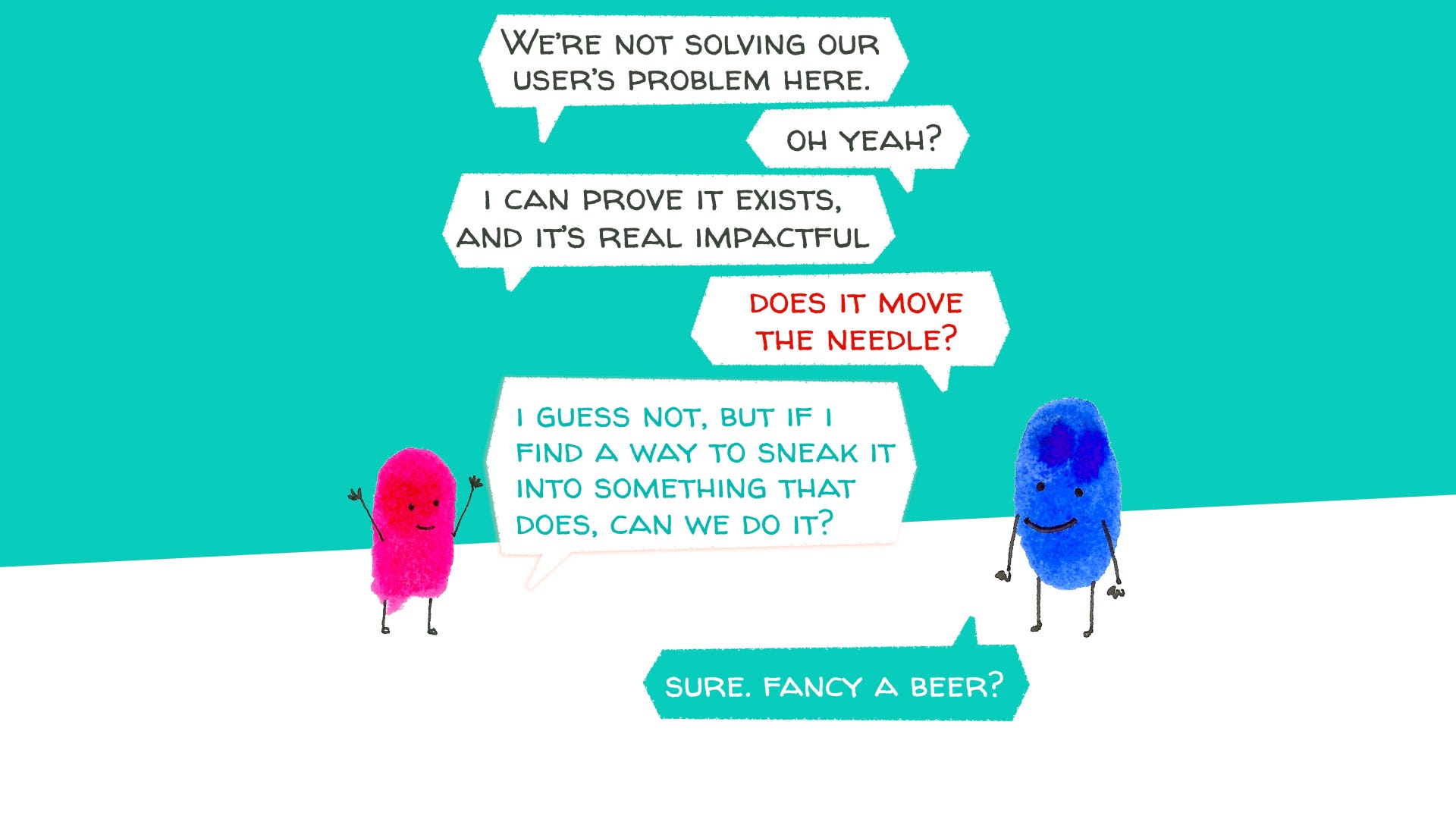 Hey look, you just made a new friend!
Hey look, you just made a new friend!
You’re going to be wrong sometimes. In fact you should aim to be wrong a bunch — if you’re not, then you’re not questioning things enough.
Being wrong well, or having ‘Strong opinions weakly held’ is crucial in building a rapport with co-workers, and you’ll avoid the whole ‘I don’t want to question this because I don’t want an argument today’ reputation that is so counter-productive.
Back down, and be open to a counter argument.
Principle Four: Quit whining, Own the problem
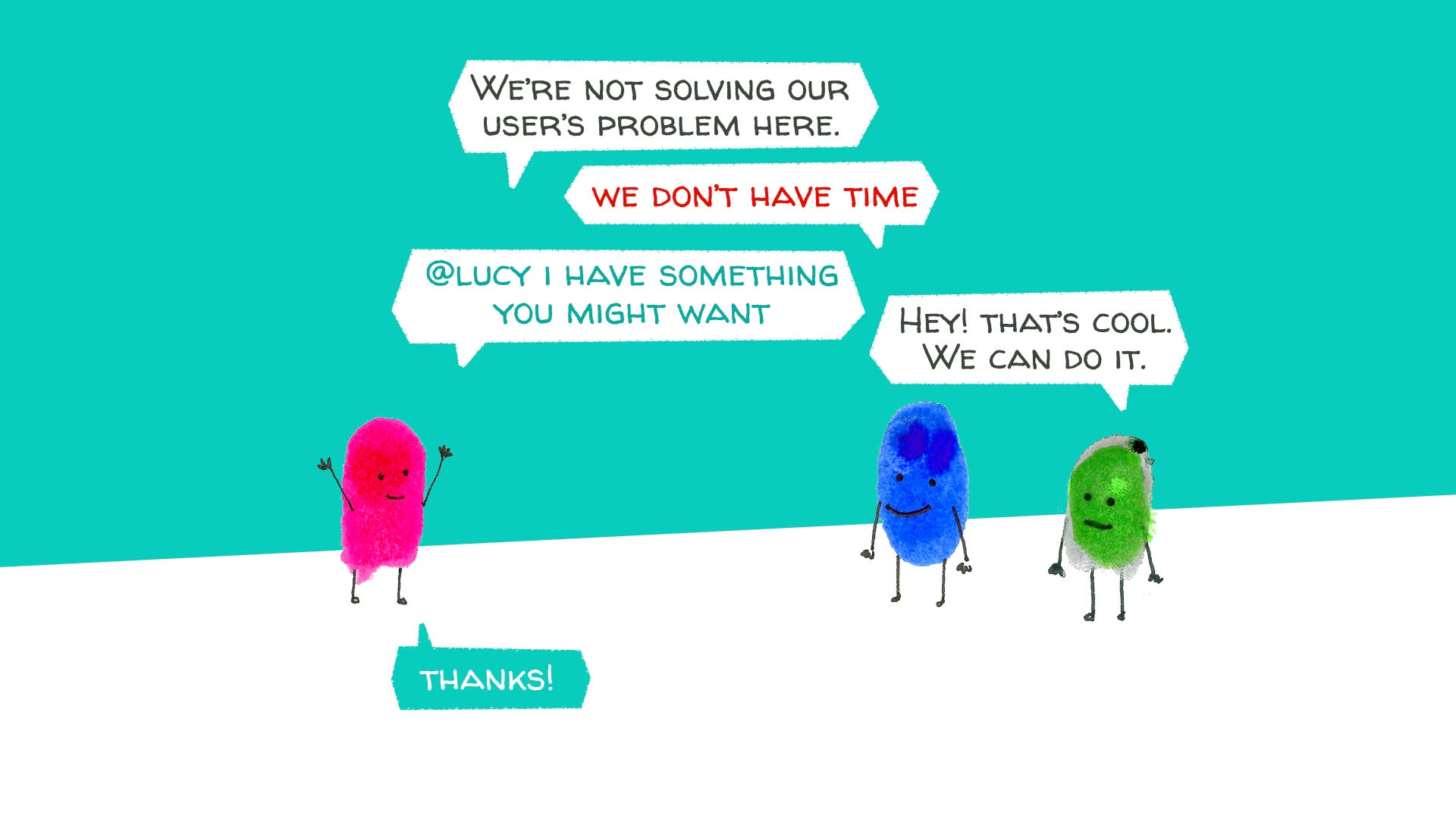 Sometimes it pays to be crafty, and have a wide view of who values what
Sometimes it pays to be crafty, and have a wide view of who values what
If you think something is important, but you just can’t persuade someone to work on it, it’s time to get creative. After all, you’re still judged on the quality of the experience.
-
Is there something you can do to further prove the value of your idea? (User research, examples in other industries/products)
-
Is there another product team or part of the business for whom this makes more sense to work on?
-
Longer term, can you build this into a future roadmap item or initiative?
-
Is there something smaller you can do to make progress?
Fundamentally, throwing your hands in the air and saying it’s impossible isn’t going to do anyone any good, least of all yourself. Tackle the challenge head on.
In Summary
It’s not enough to just be a good designer, at least not in a fast-moving product environment. You need a bunch of soft skills to get things done.
You need to be a salesperson, a psychologist, a storyteller and a glutton for punishment.
Managing ‘up and out’ is important for anyone, but designers tend to find it hard due to the nature of what we do — our craft produces outputs that are subjective and easy to critique.
This isn’t just true of designers. To become influential and essential in your organisation, you need to get close to the people. Understand how to speak their language, and speak to the things they care about.
Good luck! It’s not easy, but the result will be a better product for everyone.
*This article was adapted from my presentation on the Google stage at Slush 2016 in Helsinki. Thanks to Google Developers for inviting me to that. That talk is here if you want to look at the top of my head for half an hour._
It was then a Medium post, which is here
_The fingerprints belong to my wife Karen — I stole them off our 2015 Christmas cards…*